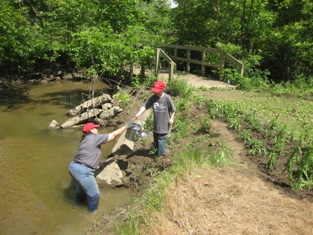
HRWC’s work with local community partners to reduce stormwater impacts in recent years is starting to show results! These results range from better relationships with constituents and a better educated public to measurable water quality improvement. Some key results in the past year include:
- Phosphorus in the Middle Huron close to meeting target levels. Efforts to educate the public and restrict the use of phosphorus fertilizers are correlated with a decrease in total phosphorus concentrations in the river and tributaries. Concentrations have dropped by more than 30% in some areas.
- Water quality monitoring used as a statewide example. HRWC’s Water Quality Monitoring program is being touted in statewide guidance as an example of an innovative strategy to monitor stormwater across a large watershed. Look for expansion into Livingston County this year!
- Stormwater projects are expanding. Numerous stormwater projects were installed over the last year in the watershed. Types of projects include: storage & treatment, Grow Zones, rain gardens, shoreline and buffer restoration, and fertilizer ordinances
- Coordinated watershed-wide stormwater activities. At community partner request, HRWC facilitates ongoing planning of key stormwater projects and watershed activities in three counties: Wayne, Washtenaw and Livingston.



